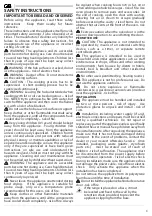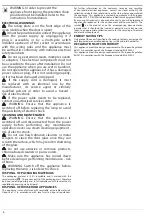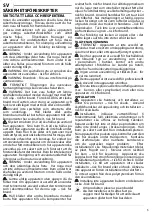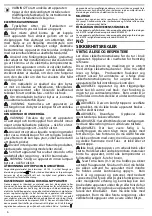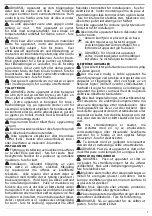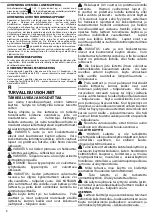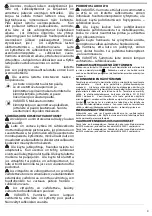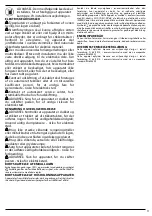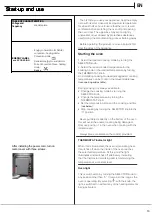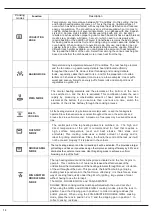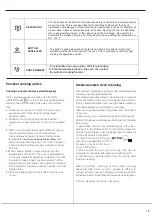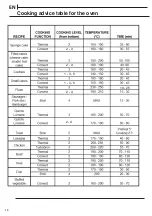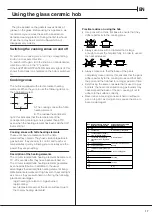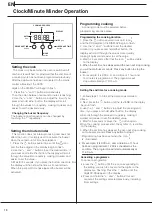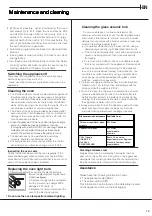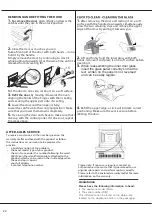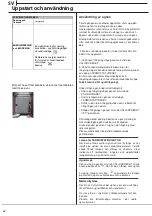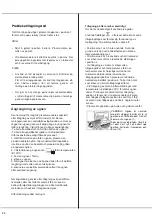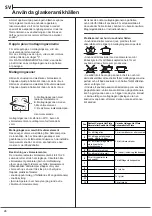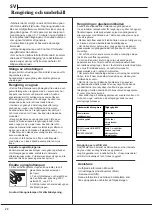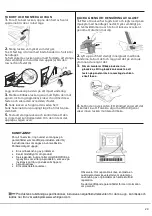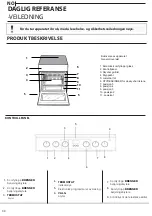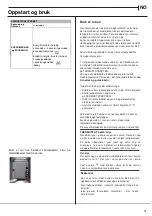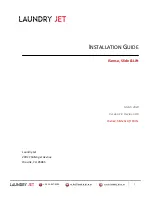
The glue applied on the gaskets leaves traces of
grease on the glass. Before using the appliance, we
recommend you remove these with a special non-
abrasive cleaning product. During the first few hours
of use there may be a smell of rubber which will
disappear very quickly.
Switching the cooking zones on and off
To switch on a cooking zone, turn the corresponding
knob in a clockwise direction.
To switch it off again, turn the knob in an anticlockwise
direction until it is in the “0” position.
If the ELECTRIC HOTPLATE ON indicator light is lit, this
shows that at least one hotplate on the hob is switched
on.
Cooking zones
The hob is equipped with electric radiant heating
elements. When they are in use the following items on
the hob become red.
A.The cooking zone with a hilite
heating element
B. The residual heat indicator
light: this indicates that the temperature of the
corresponding cooking zone is greater than 60°C,
even when the heating element has been switched off
but is still hot.
Cooking zones with hilite heating elements
These emit heat via radiation from the hilite
elementsthey contain. They have similar properties to
gas burners: they are easy to control and reach set
temperatures quickly, allowing you to actually see the
power they are providing.
Description of the heating elements
The circular radiant/hilite heating elements become red
10 - 20 seconds after they have been switched on.
The circular radiant/hilite heating elements guarantee
even heat distribution in addition to the usual
advantages that radiant/hilite heating elements bring.
Hilite/radiant elements emit high levels of heat and light
as soon as they are switched on, offering the following
practical advantages:
· rapid heating (in relation to a gas burner)
· rapid cooling
· even temperature across the whole surface (due to
the circular heating elements)
B
A
A
A
A
Practical advice on using the hob
• Use pans with a thick, flat base to ensure that they
adhere perfectly to the cooking zone.
• Always use pans with a diameter that is large
enough to cover the hotplate fully, in order to use all
the heat produced.
• Always make sure that the base of the pan is
completely clean and dry: this ensures that the pans
adhere perfectly to the cooking zones and that both
the pans and the hob last for a longer period of time.
• Avoid using the same cookware that is used on gas
burners: the heat concentration on gas burners may
have warped the base of the pan, causing it not to
adhere to the surface correctly.
• Never leave a cooking zone switched on without a
pan on top of it, as doing so may cause the zone to
become damaged.
Pos.
Radiant Ceramic Hot Plate
Normal or Fast Hot Plate
Ceramic Halogen Hot Plate
Automatic Hot Plate
0
Off
Off
1
To cook fish
To melt butter or chocolate
2
To cook potatoes (steam),
soup, chickpeas, beans
To reheat liquids
3
To continue cooking large
quantities of food, vegetable
soup
4
To roast (medium)
For sauces (including cream
sauces)
5
To roast (well done)
6
To brown or quickly bring to a
boil
To cook at boiling point
7
8
For roasts
9
10
For stews
11
12
To fry
Using the glass ceramic hob
EN
17

